Views: 0 Author: Site Editor Publish Time: 2025-09-12 Origin: Site








Food packaging machinery protects, preserves, and presents products across food, beverage, and pharma lines. Modern automation helps businesses cut costs, speed output, and stay fresh. Nowadays, packaging machines are everywhere, yet choosing the right one feels overwhelming. Do you really know which type fits your product? In this post, you’ll learn the main types of food packaging machines and how to select them effectively.
Major Types of Food Packaging Machines
How to Choose: Practical Selection Framework
Buying Smart: Quick Decision Worksheet
FAQs
| Product/Need | Best-fit machine | Watch-outs |
|---|---|---|
| Chips, nuts, powders | VFFS + proper filler | Fragile items, drop height |
| Bars, bakery | HFFS / Flow wrap | Limited rigidity |
| Single-serve sticks | Stick-pack | Not for large particulates |
| Fresh meat/ready meals | Tray sealer + MAP | Irregular shapes |
| Odd shapes, premium | Thermoformer | Tooling cost |
| Long shelf life | Vacuum sealer | Package compression risks |
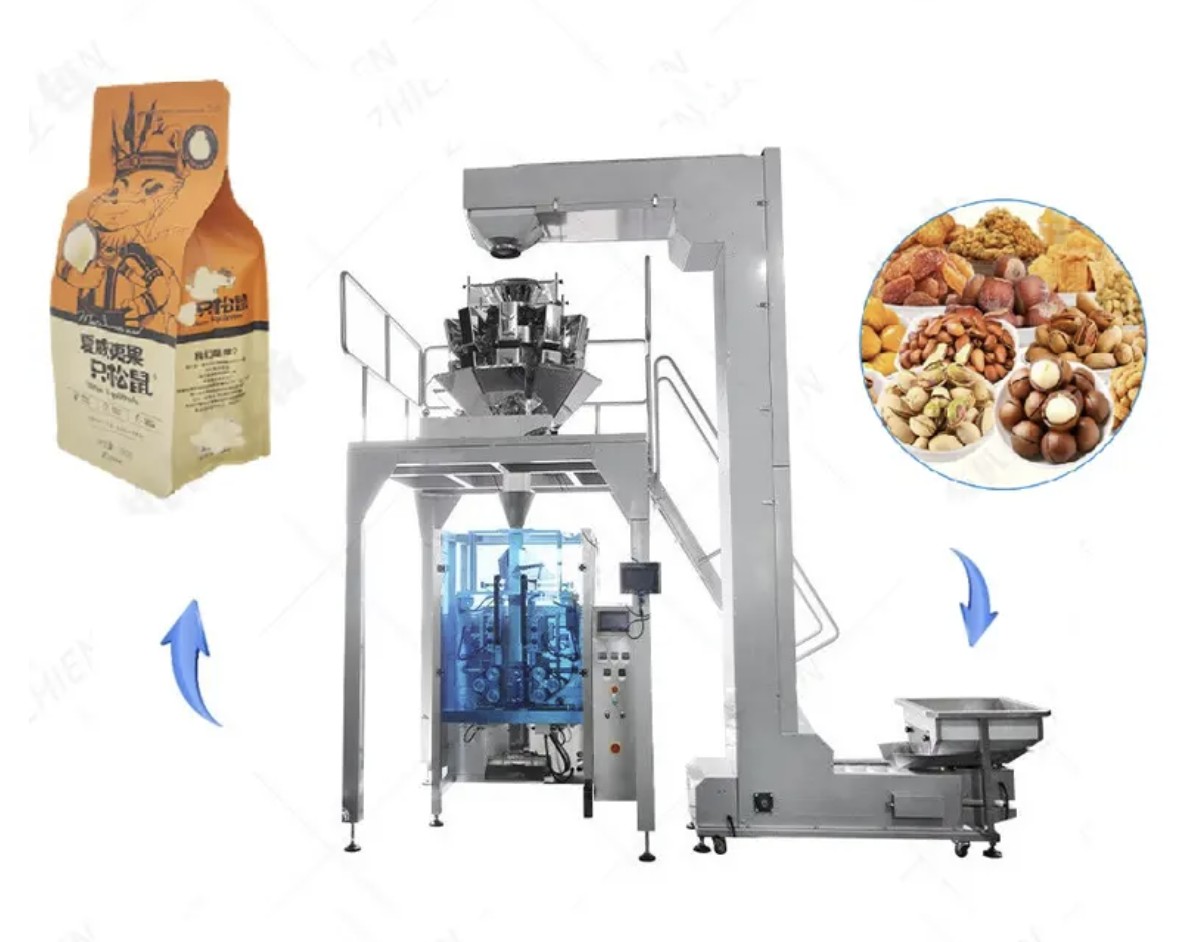
VFFS machines form a continuous tube from flat rollstock, fill it vertically and seal cross-seals to create pillow or gusseted bags; they are the default for free-flowing granules such as nuts, rice, frozen vegetables and snack foods because gravity assists every step and outputs of 120–150 bags/min fit a small footprint.
Their advantage lies in the lowest film cost per pack, fast change-over with snap-in forming sets and easy integration with multi-head weighers or auger fillers.
But fragile products can fracture in long drops, powder dust can contaminate the seal band and cause leaks, and thin printed films require expensive servo tracking to keep graphics centred.
Creates a bag from rollstock, then fills, then seals.
Great for chips, nuts, powders, granules; fast and versatile.
Less ideal for bulky, fragile products; consider gentler paths.
Pairs well: multihead weighers for particulates; auger fillers for powders.
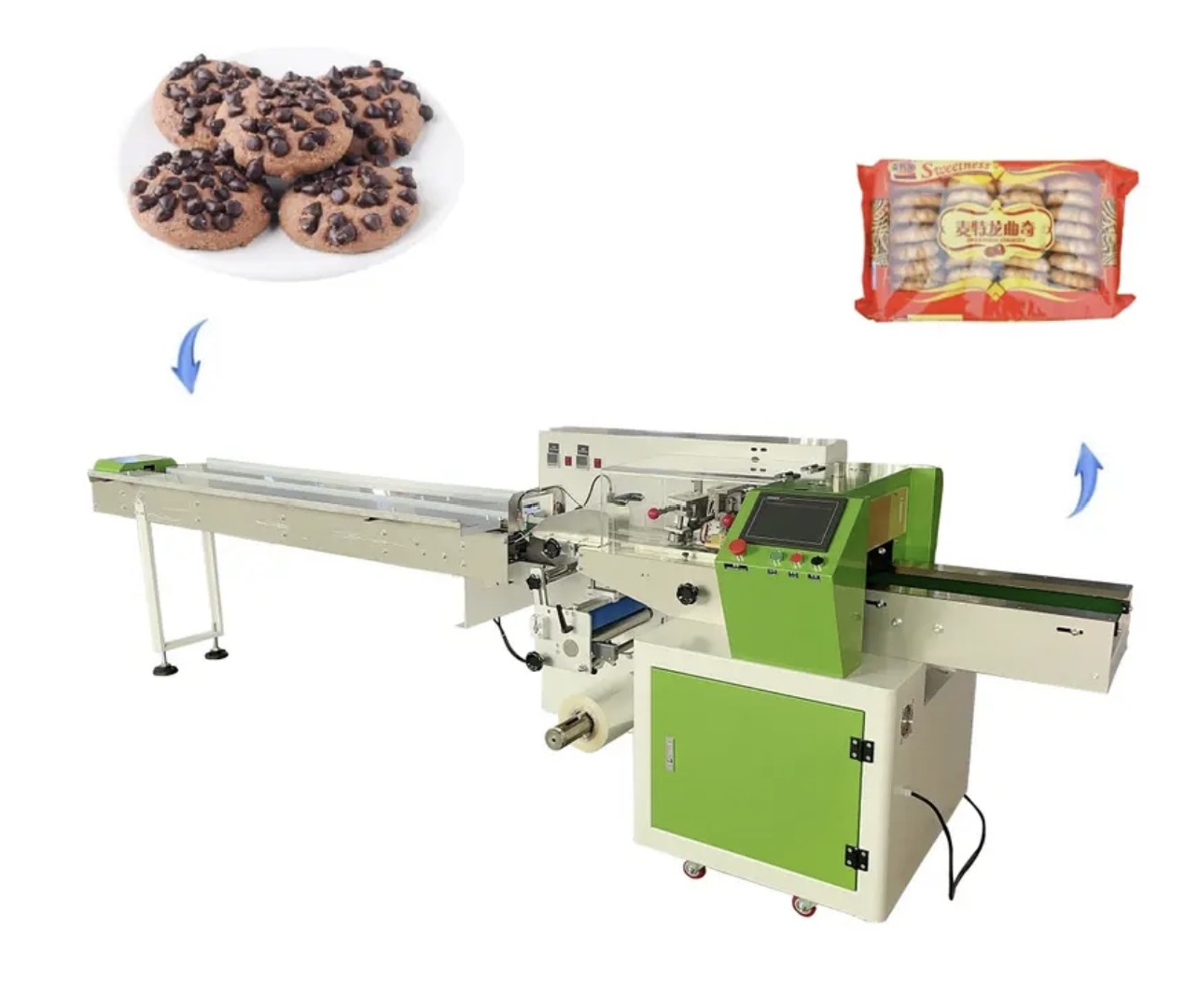
HFFS flow-wrappers draw one web of film under a horizontally conveyed product, wrap it into a pillow or fin seal and cut at high speed; chocolate bars, bakery slabs and cheese slices dominate this format because the belt supports the item while sealing and outputs of 400–600 pieces/min are routine.
The method gives gentle handling, simple tooling for euro-slots or gussets and quick width adjustments via servo belts, yet it copes poorly with loose granules, consumes more floor space than VFFS and generates slightly higher film scrap from the lap seal.
Uses a single film web; forms pillow or fin-seal packs.
Best for bars, candies, bakery items; continuous process reduces waste.
Flow wrapping runs very fast; lacks rigid protection.
When HFFS wins: products prefer horizontal orientation or regular geometry.
Stick-pack and sachet systems slit a 300 mm web into 4–20 parallel narrow tubes, dose 1–5 g of powder or liquid and seal both ends in one cycle; single-serve coffee, sugar and nutraceutical powders favour the style because lane outputs above 1 000 sticks/min translate into very low unit cost and instant consumer convenience.
Multi-lane servo augers keep fill accuracy within ±1 % and laser notches give easy-tear openings, but liquids need heated sprung jaws to avoid channel leakers, large particulates bridge the narrow 10 mm tube and balancing all lanes demands skilled set-up.
Single-serve coffee, sugar, nutraceuticals; compact and efficient.
Tight dosing, multi-lane options, easy tear notches; not for large particulates.
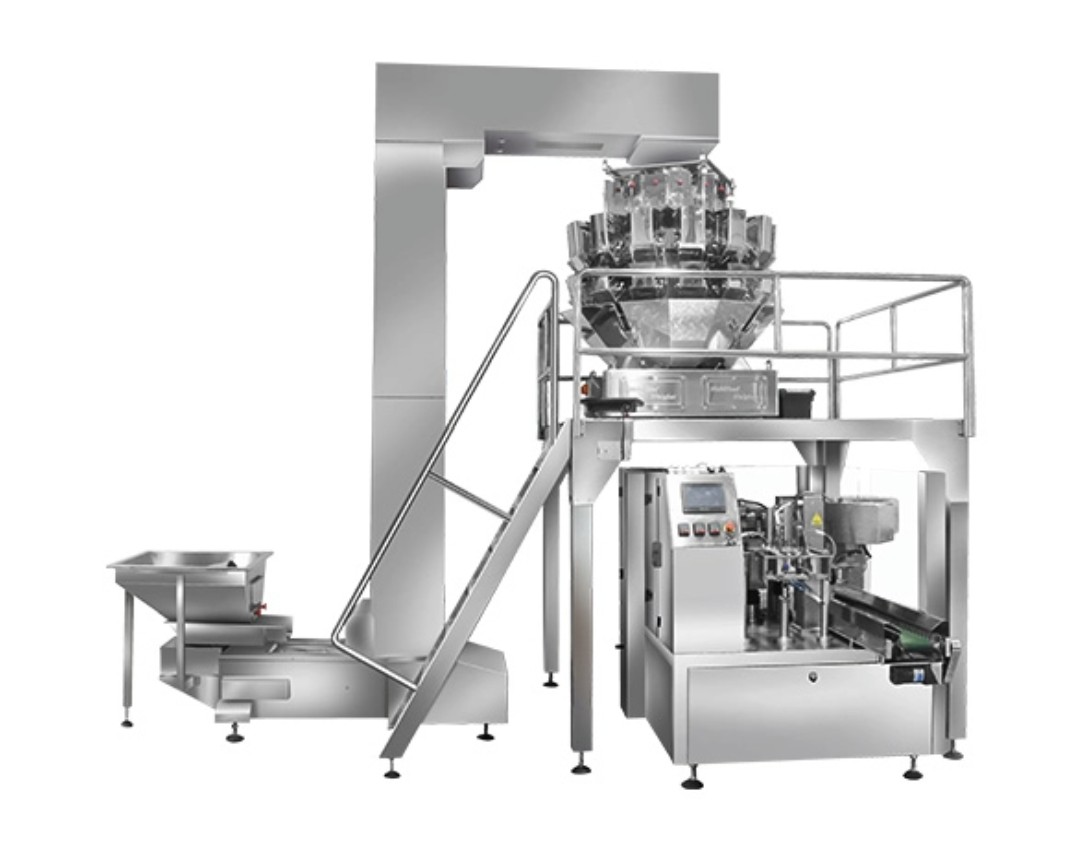
Pre-made pouch machines use a magazine or robot to pick an already-formed pouch, vacuum-open it, fill and then close with zipper or spout options; premium coffee, pet food and upscale snacks choose the format because the pack arrives retail-ready with perfect print registration and no forming scrap.
Benefits include reclosability, superior shelf appeal and quick flavour change-overs without film threading, while drawbacks are pouch purchase prices two to four times higher than rollstock, cycle speeds limited to 40–90 ppm and frequent magazine reloads.
Opens ready pouches; fills; seals via zipper or non-zipper.
Great for coffee, spices, pet food; premium shelf appeal.
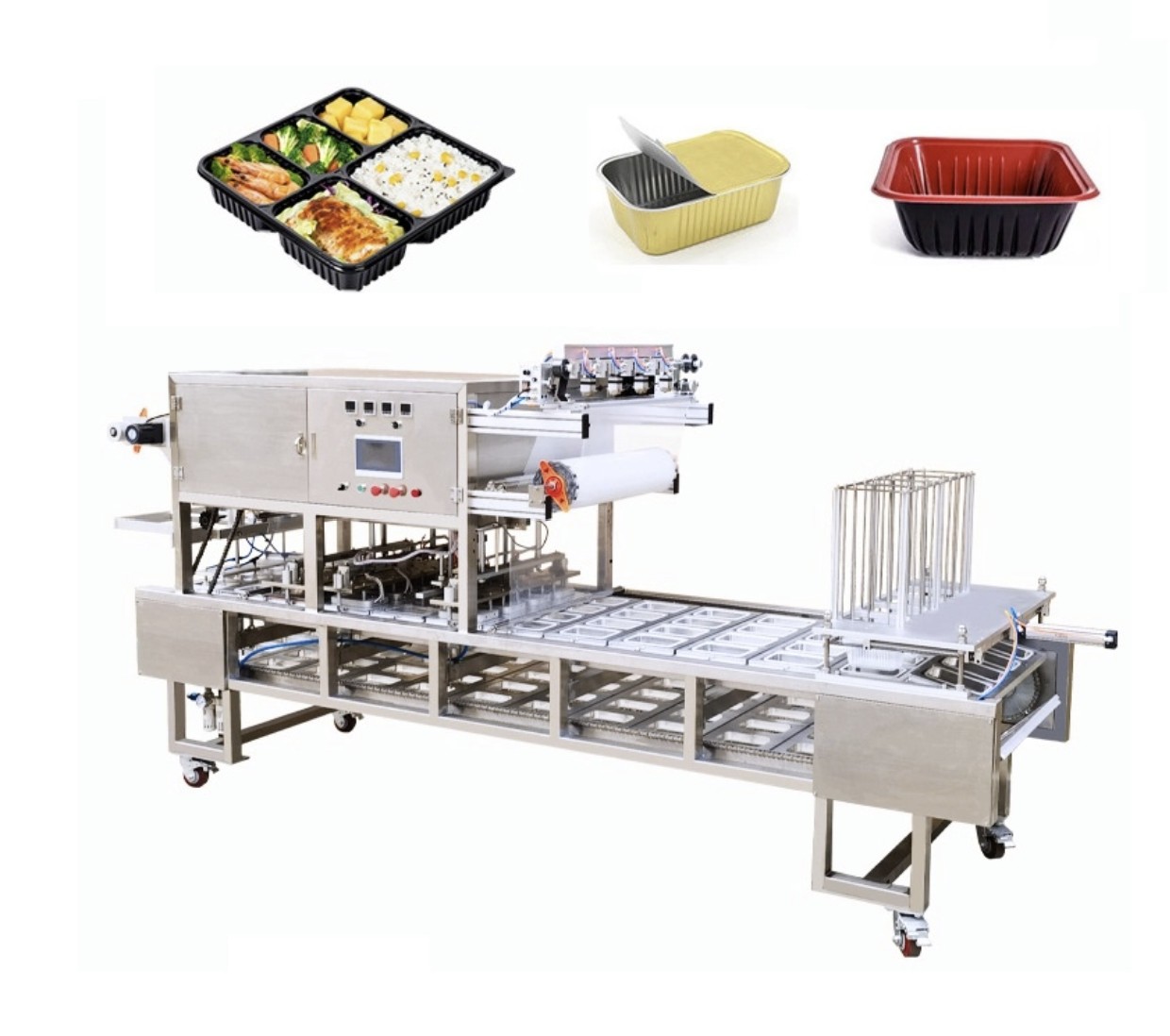
Tray sealers, MAP and vacuum-skin units place product in a rigid tray, flush with modified gas or draw a tight film skin over the contours and seal a printed lid; fresh meat, fish and ready meals adopt the technology to double or triple shelf-life while presenting a crystal-clear display.
The process gives accurate gas mixes logged for QA, easy leak detection and excellent branding space, but users must inventory trays, pay more for barrier lid film and maintain inline gas analysers.
Places product in a tray; seals using film or lid.
Meat, fish, ready meals; airtight environment, clear display.
Watch irregular shapes; added support may be required.
Thermoform-fill-seal (TFFS) machines heat a bottom web, form deep or shallow cavities, fill them and seal with top film in one continuous motion; portion cheese, medical devices and shaped deli items select this route when a custom fit and high oxygen barrier are essential.
Advantages are precise weight control, attractive contour packs and high throughput once tooling is proven, yet initial mould cost is high, change-overs take 1–2 hours and volumes must justify the investment.
Forms custom cavities from sheet; then fills; then seals.
Excels on unusual shapes; meats, cheese, medical trays.
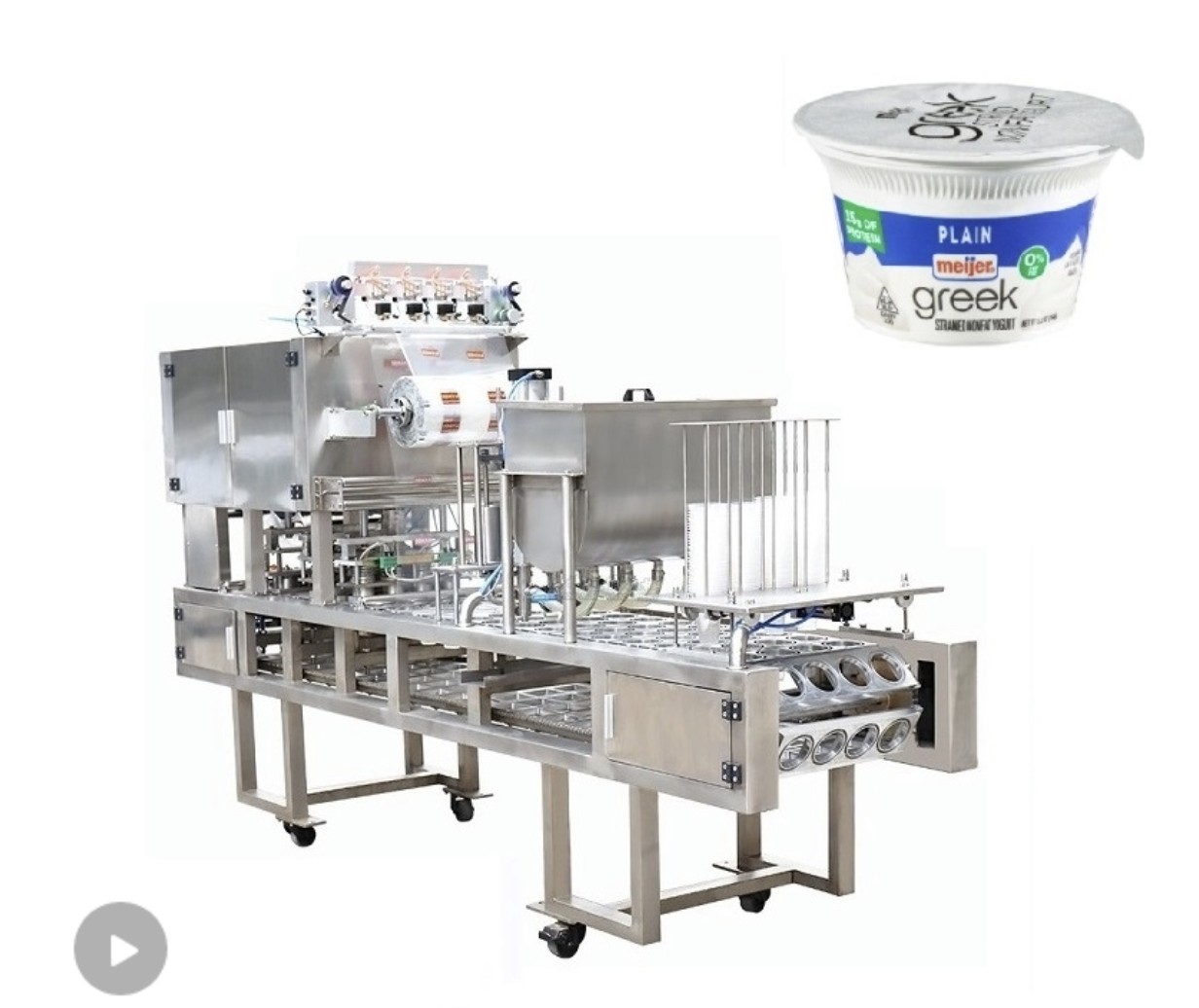
It meter by piston, volumetric cups, or flowmeters for thin liquids. Cleanability and CIP drive uptime; closures must match neck finishes. Label accuracy and code quality protect traceability and brand trust.
Yogurt, sauces, drinks; piston, volumetric, or flowmeter dosing.
Cleanability, CIP, correct neck finish, label accuracy matter.
Vacuum packaging chambers evacuate air from a pouch placed inside a chamber and then seal it, cutting residual oxygen below 1 %; cheese blocks, processed meats and bulk nuts rely on the method to extend shelf-life three to five times with minimal film cost.
The batch unit delivers a very strong seal, handles multiple pouches per cycle and tolerates thick bags, but speed is limited by chamber size, loading is manual and soft products risk deformation unless boards support them.
Removes air; slows spoilage; ideal for meats, frozen foods.
Works since aerobic microbes struggle without oxygen.
Airtight seals can extend life three to five times. Clear films showcase contents; temperature stability reduces waste. Rotary systems lift throughput once volumes scale.
Airtight seals extend shelf life three to five times.
Clear film aids visibility; temperature stability reduces waste.
Shrink-wrapping systems bundle items in a loose polyethylene or polyolefin sleeve that contracts in a heat tunnel to a glossy skin-tight finish; beverage cans, multipacks and promo trays employ the film for tamper evidence and bold shelf graphics.
The technique adds little material cost, resists moisture and creates an eye-catching bull’s-eye closure, yet it offers almost no stacking strength, tunnel temperature must be tuned to avoid dog-ears and thin labels can scorch.
Heat-shrunk film gives tamper evidence; bundles multipacks.
Cosmetic finish improves look; no structural reinforcement.
Cartoning, case-packing and palletizing modules erect retail cartons, load shipping cases and stack layers automatically; any plant that ships to club stores or e-commerce requires these units to cut manual labor and stabilize truck loads.
They deliver repeatable pallet patterns, reduce repetitive-strain injuries and balance upstream machines with accumulation tables, but the line occupies considerable floor space, format changes can take 30–45 minutes and tight synchronization is needed to prevent starving or blocking.
They group individual packs into convenient sets. Think stick candies, hot-dogs, or sample assortments. Speeds kitting and promo builds without full cases.
Bags, sacks, or cases hold cereal, powder, or primary packs. Closures use ties, clips, tape, or glue depending on spec. Choose orientation, count patterns, and protective dividers early.
Accumulation aligns bottles before filling and capping. Tight torque, proper liners, correct threads prevent leaks. They integrate to fillers, labelers, and coders for flow.
Palletizers stack layers safely, repeatably, and fast. Stretch wrapping stabilizes loads, reduces damage, saves labor. Robotic cells scale across SKUs and shifting pack sizes.
After understanding the types of food packaging machines, the difficulty lies in choosing the machine that suits your production line. Generally speaking, choosing a suitable food packaging machine is divided into four steps:
Start with the product & format
Consider throughput & changeover
Shelf-life & barrier needs
Total cost of ownership (TCO) & ROI
Ask what it is, how it flows, how it looks. Then pick a pack style. Shortlist types of food packaging machines.
Product → Likely formats → Candidate machines
| Product | Format options | Shortlist |
|---|---|---|
| Dry particulates | Pouch, pillow | VFFS + multihead weigher |
| Powders | Stick, sachet, pouch | Stick-pack, sachet, VFFS + auger |
| Viscous | Spouted pouch, cup, bottle | Pre-made pouch filler, piston filler lines |
| Liquids | Bottle, cup, jar | Flowmeter or gravity fillers, cappers |
| Fresh protein | Tray, vacuum, skin | Tray sealer + MAP, vacuum chamber |
| Odd shapes | Custom tray | Thermoform–fill–seal |
Quick checks
Target appearance. Premium look needs pre-made pouches or thermoformers.
Product fragility. Gentle handling beats speed for chips or flaky items.
Retail channel. Club packs lean on bundling or cartoning.
Define speed in CPM/PPM. Then plan for real mix. Frequent swaps? You need fast, tool-less changeovers.
Target rate: line speed, not machine brochure numbers.
SKU mix: film widths, forming sets, lane counts.
Changeover: recipe recall, scales auto-tuning, quick belts.
Film/web: roll width, core size, splice method, registration.
Pick the freshness tool that fits the product, not the trend.
Shelf-life chooser
| Goal | Go to | Notes |
|---|---|---|
| Max oxygen removal | Vacuum packaging | Great for meats, cheese blocks |
| Appearance + life | MAP on trays/pouches | Verify gas mix, leak tests |
| Tamper evidence | Shrink bundling | Adds look, not structure |
| Custom fit + barrier | Thermoforming | Pays off for shaped items |
Check compression risk before vacuum.
Verify film seals at target speed and temperature.
Build gas audit steps into QA for MAP.
Price matters. Performance pays the bills.
TCO checklist
Purchase price vs uptime, yields, scrap rates.
Three–five year priorities: growth, SKU complexity, headcount.
Utilization: daily or intermittent. Plan maintenance windows.
Team capability: operators, techs, spares strategy.
Tech appetite: proven gear or cutting edge.
Sourcing choices
| Decision | Option A | Option B | What it means |
|---|---|---|---|
| Equipment age | New | Refurb/Used | New runs longer; used trims capex |
| Commercial path | OEM | Distributor | OEM depth; distributor breadth and service |
| Service model | In-house tech | Contracted service | Control vs flexibility and coverage |
Pilot runs on your product reduce surprises.
Ask for change-part lists and lead times early.
Map end-of-line now. Palletizing issues snowball later.
Use this quick worksheet before you buy. It keeps budgets honest and lines future-proof.
What is the real budget impact over three to five years?
How many hours per day will it actually run?
Can our team maintain it without outside help?
Do operators match the control complexity we plan?
Are changeovers fast enough for our SKU mix?
What scrap rate is acceptable at target speed?
Does it fit current utilities and plant constraints?
Can it scale if volumes double next year?
How will we source spares and critical parts?
Are we chasing new tech, or choosing proven gear?
Tip: keep Types of Food Packaging Machines in scope. Map needs to real formats and shelf-life goals.
Routes to buy
OEM direct. Deep product knowledge. Firmware access. Longer queues possible.
Distributor. Broad catalog, local service. Faster quotes, flexible bundles.
Trial essentials
Run demos on your product and film.
Capture speed, seal, and dose accuracy metrics.
Take sample packs to marketing and QA for review.
Confirm cleanup time, allergen washdowns, and tool changes.
Line layout review
Check infeed, outfeed, and accumulation space.
Verify clearances for doors, guards, sanitation zones.
Plan coder, labeler, and inspection locations.
Validate palletizing flow and aisle widths.
| Factor | New | Refurbished | Used |
|---|---|---|---|
| Upfront cost | Highest | Mid | Lowest |
| Lead time | Longer | Medium | Short |
| Warranty | Full | Limited | Minimal |
| Performance | Peak | Near-new | Variable |
| Controls | Latest | Updated | Mixed |
| Validation docs | Complete | Partial | Sparse |
| Spares support | Strong | Good | Unclear |
| Risk profile | Low | Moderate | Higher |
How to decide
Tight budget favors refurb or used, plus service contracts.
High uptime targets push new machines and stronger warranties.
Complex validation needs prefer full OEM documentation.
A: Fresh meat favors tray sealers using MAP or VSP for color, drip control, and safe headspace. Vacuum works for primal cuts if compression won’t distort. Frozen meals rely less on MAP; vacuum before freezing or use sealed trays for retail presentation. Always test for deformation and purge.
A: Typical gains run about three to five times longer than non-vacuum packs. Results depend on residual oxygen, film barrier, product type, temperature control, and hygiene. Vacuum slows oxidation and aerobic microbes; it does not replace safe handling. Validate life with real storage trials and microbiology checks.
A: Pick VFFS for free-flowing granules, snacks, and powders needing fast bagging and simple changeovers. Pair it to multihead weighers or augers. Choose HFFS/flow wrap for bars, bakery, and regular shapes where horizontal support reduces breakage and maximizes speed. Decide by product geometry, orientation, and desired presentation.
A: Shrink adds tamper evidence and strong shelf appeal, yet provides little structural protection or barrier. Heat exposure can distort soft items; perforations vent air but reduce seal tightness. It won’t meaningfully extend shelf-life. Expect tuning for film gauge and tunnel settings, and consider trays or cartons if needed.
A: Yes when volumes justify tooling. Thermoformers deliver precise cavities, great product fit, strong branding, and flexible barrier choices. Tooling and changeovers add cost and time; trained operators help. Ideal for meats, cheese, and shaped SKUs. Use them when repeat runs and unit cost matter more than agility.
A: Skip cartoners if retail accepts naked pouches or flow-wraps in a shipper. Use cartoners when branding space, stack strength, tamper cues, or planogram rules demand cartons. Case packing remains essential for transport. Decide by channel expectations, damage risk, barcode placement, and automation footprint on your floor.
A: Change parts and tooling, film waste at startup, and downtime during changeovers. Labor for sanitation, QA checks, and training. Maintenance, spare kits, and service calls. Utilities—air, power, steam, or gas. Inks, labels, coding supplies. Compliance audits, documentation, and floor space. Plan buffers for lead times and spares.
Selecting the right machine begins with your product, format, and shelf-life targets, then weighs throughput, changeovers, and TCO across VFFS/HFFS, stick-pack, pre-made pouch, tray sealing with MAP, thermoforming, and vacuum. Prove choices on your film and product, map end-of-line early, and align service, spares, and QA from day one to avoid costly resets.
If you’re ready to move, Eastbest Packing designs and integrates complete food-packaging lines tailored to pouches, trays, cups, and bottles, delivering accurate dosing, hygienic design, fast changeovers, and dependable support for reliable, scalable production.